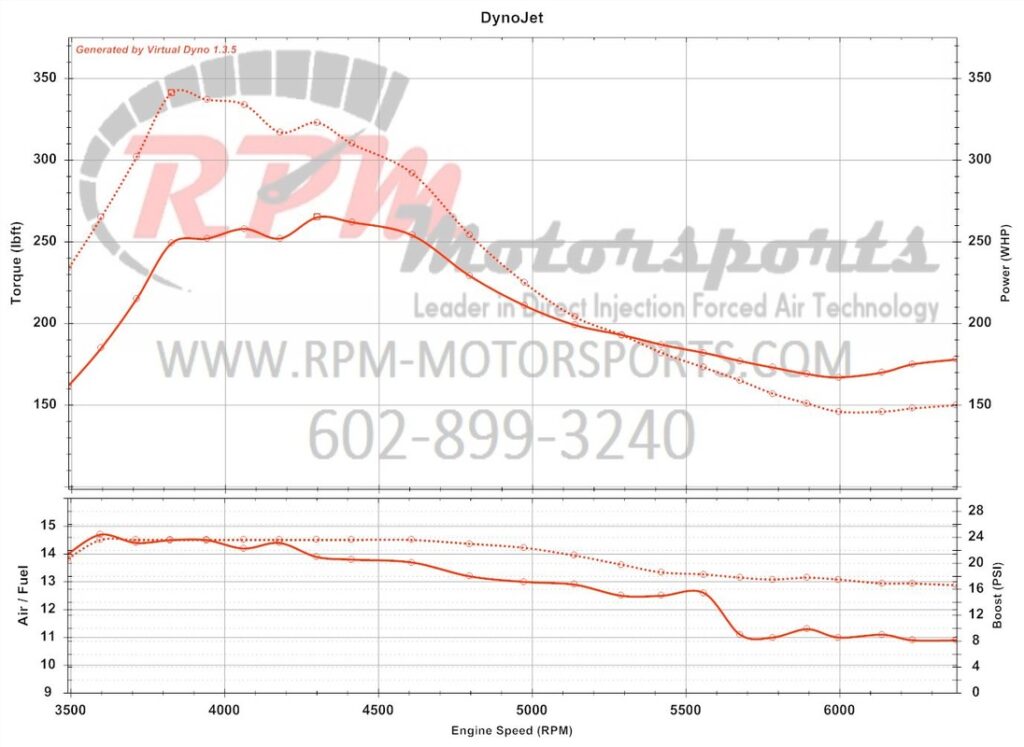Over the years we have inevitably run into customers who were tuned by other shops at some point in the car’s life. Sometimes the customer we are dealing with is aware of the tune, and other times they are secondary owners that had no clue what work the previous owner had done to the car. Either way, they turn to us for some performance parts and tuning and we are glad to help.
Usually when we run across a car that was previously tuned it was work done by one of our competitors, and the tune will have many logical adjustments made to it that are appropriate for someone tuning this type of ECU. Other times we run across situations that are much more mind bending, and that’s where we bring us to today.
While observing some logs on a customer’s car that we all believed to be a STOCK 2008 Solstice GXP, the logs started to reveal some irregularities. Our first clue that something was not stock was that the MAF sensor was seeing much more airflow than stock. There were many other red flags that turned up in the “stock” tune that quickly indicated to us that something was WRONG. So we downloaded the tune off of the ECU to see what was up.
Right away, it became apparent that this file was not stock at all, but it also was not a file written by someone with specific knowledge on how to tune an LNF engine either. At best, this file looked like it was touched by someone who was used to tuning other types of turbocharged motors, but that someone had no clue about direct injection fueling or an ECU that used torque calculations (like the Bosch Controller we have in the Solstice, Sky, HHR, and Cobalt).

If you are accustomed to reading dyno graphs, it would be quite obvious that something was greatly wrong with the above picture. Even if you aren’t used to reading the graphs, you can still see the extreme loss of power at higher RPMs. But don’t let the power part of the graph steal all of the attention. In reality, where this dyno pull is making the greatest amount of power (256whp/341wtq) is actually operating under incredibly dangerous conditions. Not only is the turbocharger boosting well above 24 psi (the stock MAP sensor was maxed out, so who knows how much boost was there), but the Air Fuel Ratio was so lean that it was almost leaner than idle! This was a 14.5 AFR @ more than 24psi of boost.
Furthermore, at the upper RPM ranges the car suddenly became extremely rich, and power dropped to about 170whp @6,000rpms (well below stock despite the engine being under higher than stock boost pressure). This goes to show you that boost does not always equate to power. Upon further examination of the data logs it became clear that the car was attempting to protect itself from the extreme combustion temperatures being created by the combination of excessive boost and dangerously lean AFR. In fact, according to the Oxygen Sensors the Exhaust Gas Temperature during this pull was more than hot enough to melt aluminum.
One of the big questions I hear a lot of other car guys ask each other at car shows or online is “How much boost are you running?”, if anything this case should help you understand how irrelevant that type of question is. A properly tuned car at these same boost levels would be producing substantially more power than this, and be operating much safer.
From here we can only hope that however much driving around had been done on the previous tune hasn’t already caused any irreversible damage. Early indications may be showing that this customer got lucky on this one because the car was not a daily driver for them and only saw occasion use on that previous tune. Now we will go back through with our V-Tuner and connect to the customer’s car to upload our RPM Stage 2 Tune and carefully monitor the car again for the next few days. Once it has been determined that we have a properly working LNF, this customer should experience a wickedly different top end power curve on this car (and not to mention a safer one too!).
This is one of the added benefits to getting a tune from a shop that specializes in your car. Furthermore, with all of our V-Tunes you get a complimentary Remote Dyno & Diagnostic Service ($150 value), which is where we realized that we had this issue in the first place. Had this customer just gone to another shop for service that didn’t know the LNF engine that shop could have attempted to flash their tune on top of this already bad tune and not known any better.